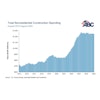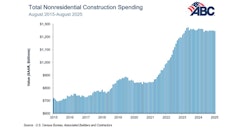
The funds offered through the American Rescue Plan Act and the Infrastructure Investment and Jobs Act promise to finally close the last remaining gaps in digital connectivity across the country, but this can only be accomplished with proper use of the money. Intelligent allocation geared toward maximizing the impact of each dollar spent and ensuring the success of chosen projects will go a long way in helping all states take full advantage of this one-time opportunity.
In a new report, the Information Technology and Innovation Foundation has developed a framework around which policymakers should shape their decisions in order to maximize the efficiency of their funds. The report details numerous strategies that can be employed to stretch the money to its full potential. Among them: Funding should be allocated initially through reverse auctions to encourage competition for the lowest-cost way to serve, requirements should be technology-neutral and predicated on realistic speed benchmarks based on requirements for commonly used applications and costly regulatory barriers to deployment should be reduced where possible. Minimizing regulatory waste and maximizing market advantages such as flexibility and innovation, within the constraints of necessary minimum standards, is key to creating an allocation process that makes best use of available funding. However, of equal importance is ensuring the successful completion of those projects eventually chosen for funding. This can be accomplished by taking three crucial steps.
First, states should not write a check to broadband providers chosen for funding until after completion of the project, with payment guaranteed if the project lives up to its promises. This approach has several advantages: One, of course, is the decreased likelihood of paying out for projects that never come to fruition. Reserving payment until after the fact puts the burden of risk onto the provider, where it belongs, rather than taxpayers. After the fact payments will often force applicants to seek initial funding through banks or other credit agencies, whose risk-assessment expertise will complement state governments’ attempts to judge the viability of applications. Additional layers of scrutiny will both encourage intelligent planning on the providers’ side and help weed out problematic applications.
Second, states should prioritize experienced providers with economies of scale. The scale and prominence of the available funding will likely tempt all manner of fly-by-night companies to offer carelessly designed plans in the hopes of profiting from government funding. But broadband is an expensive business, made trickier still by current deficiencies in both labor and supply chains, and even good-intentioned applicants might find themselves unable to keep their promises. To avoid being taken in by bad actors and inexperienced hopefuls alike, states should vet bidders by requiring some basic demonstration that the provider has the resources and expertise to offer sustainable service to consumers. Even a cursory initial check that filters out those providers without adequate capital or realistic plans will save endless time and grief down the road if it helps bring the most viable plans to the fore.
Experienced private providers should also be prioritized above government-owned networks (GONs) that, despite their altruistic origins, have too often shown themselves to be financially and logistically ill-equipped to build a functioning, sustainable network. The goal of the broadband funding is to accomplish universal connectivity, not to indulge ideological preferences for government-run networks. In most cases, GONs are a far riskier bet than is the proven competence of experienced providers that already serve large swathes of the country. However well-intentioned, a fledgling municipal broadband provider will often make mistakes where a more experienced applicant would have known what to do. Stories of failed GONs are myriad, and empirical evidence that the networks have a discernible positive impact on either broadband subscriptions or economic growth is lacking.
Appealing to a municipal network should be a last resort, not a first one. Instead, if adoption rates are low in an area with serviceable broadband, policymakers should put excess funds where the problem is by giving citizens vouchers to reduce the cost of subscriptions and computer equipment rather than wasting those funds on a duplicative network that may not be successful. Preferencing applicants with a proven track record and looking to GONs as a last resort only where they are genuinely necessary will mitigate many of the risks that go along with broadband deployment.
Finally, states should provide ongoing oversight of chosen projects through mandatory progress reports. In addition to increasing accountability, this will both broadcast the details of successful plans for others to imitate and draw attention to faltering projects while there is still time to fix them. This is a non-controversial point that would likely only be disputed by states with a deficiency in commitment or resources, but cutting corners on the cusp of a lasting solution to the digital divide is a surefire way to unnecessarily extend the time until we close it. States that plan at the outset to keep an eye on projects as they develop will be better prepared both financially and logistically than those who finally see the need for oversight after putting their faith in projects that ultimately fail. On a broader scale, inter-state transparency and collaboration, facilitated by the NTIA’s webinars and enabled by states and the selected providers willingly sharing as much information as possible about their plans as they progress, will allow all states to benefit from the simultaneous dispensing of funds across the country. Even with funding withheld until after network completion, citizens will still be left without broadband should a project fail. Every possible attempt should be made to encourage the success of the selected applicants.
Broadband deployment is a highly complex, expensive business, and the worst-case scenario could see massive amounts of resources wasted on providers that fail to produce an effective network through mistakes or sheer ineptitude. Wisely distributing the funds means putting the money into competent hands and keeping a sharp eye on how it is used. Following these steps will help states provide their citizens with the best broadband possible and avoid unnecessary delay.
Jessica Dine is the coauthor of Ten (Suggested) Commandments for Closing the Digital Divide and a research assistant at the Information Technology and Innovation Foundation




















